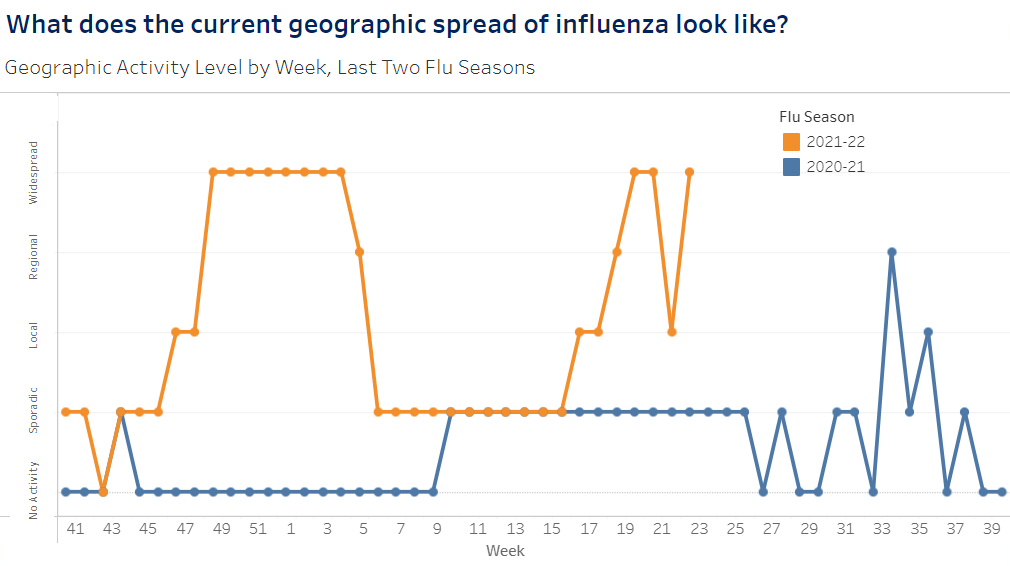
Cases of seasonal flu are increasing in parts of the country, according to the Centers for Disease Control and Prevention, and areas experiencing rising transmission rates include Maryland, Virginia and the District.
The Chief Infection Control Officer at Children’s National Hospital offers some perspective: “We are seeing different patterns over this pandemic phase,” Xiaoyan Song said.
Song said before the coronavirus pandemic, the flu season typically would come and go in a roughly three-month cycle, with cases arriving in October to early November and escalating for about eight weeks before declining over around eight weeks.
But after near zero cases during lockdown, there was an unusual spike last year in May. And again, a spike in cases this May. So, does that mean flu season is becoming a spring versus fall occurrence with a new baseline?
“Probably not,” Song said. “But whether this is going to be just a one-time spike, we also don’t know yet. Because we still don’t know when this pandemic is going to end, and how this COVID-19 is going to affect us.”
How long or how bad flu cases might continue for is hard to forecast, Song said, while noting that the highest numbers of cases were three weeks ago.
Song has a doctorate from Johns Hopkins University, and is a professor of pediatrics at The George Washington School of Medicine and Health Sciences.

Looking at Week 22 of the 2021 to 2022 influenza season ending on June 4, the D.C. Health website states flu activity remains moderately high as compared to previous influenza seasons. It notes a slight uptick in case rates in the week ending June 4 that may be attributed to an increase in reporting sites.
People between ages 5 and 24 made up the largest proportion of influenza positive cases in the District.
The Virginia Department of Health website reports widespread activity for influenza-like illnesses (ILI) during the week ending June 4.
Children age 4 or under made the most visits to emergency departments or urgent care centers in Virginia for influenza-like illnesses — making up 12% of the visits.
An influenza-like illness is defined as a fever with a cough or a fever with a sore throat.
The CDC reports Maryland had moderate activity of influenza-like illnesses during Influenza Season Week 21 ending May 28. That indicates increased activity from the previous week ending May 21 — the latest data reported on the Maryland Department of Health website. Maryland updates its FluWatch dashboard on Fridays.
Song said how long or how bad the flu season might go on for is hard to forecast. The highest numbers of cases were three weeks ago. Should people who didn’t get a flu shot last fall do so now?

Song still recommends flu shots for unvaccinated people who are at high risk of having complications. She said people who got vaccinated against influenza last fall should discuss the matter with their primary care providers.
Offering advice, Song recommends wearing a mask in crowded places and practicing good hygiene with frequent hand-washing to help protect against everything from the flu and noroviruses, to COVID-19 and monkeypox.
“Keep a mask on, wash your hands, stay healthy,” she said.
She urges health care providers to test patients with symptoms so they can be properly diagnosed and offer appropriate treatments, whether it’s COVID-19 or influenza.
“That early diagnosis and early treatment will help the patient get through the infection as quickly as possible,” Song said.
The CDC notes there are prescription antiviral drugs that can be used to treat influenza.









